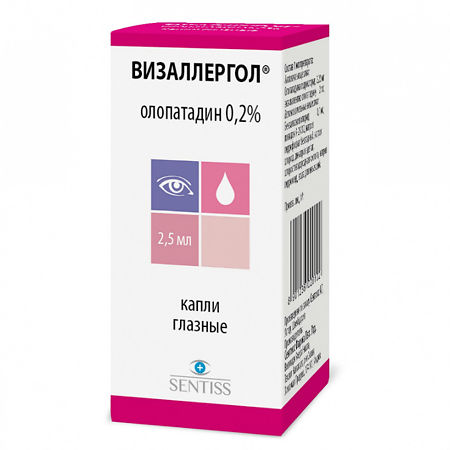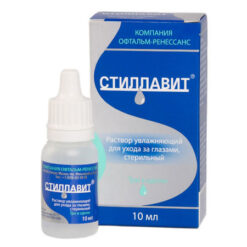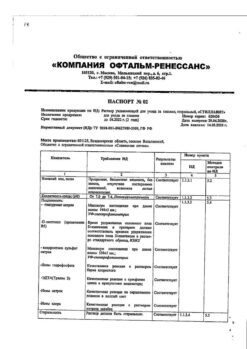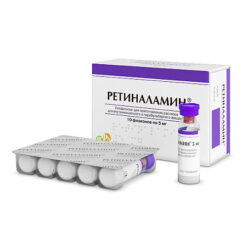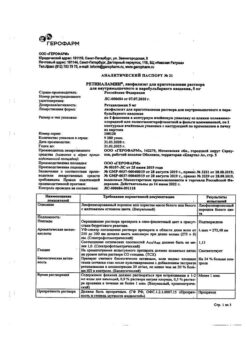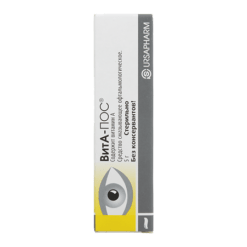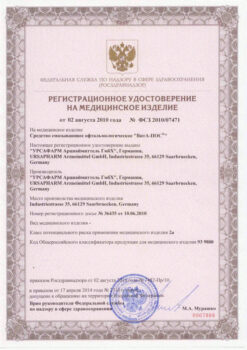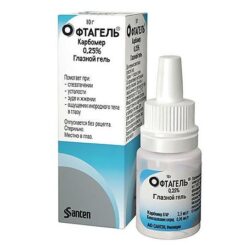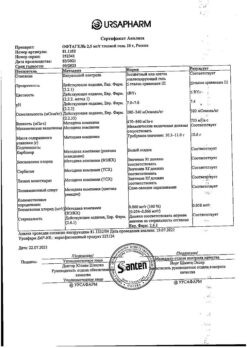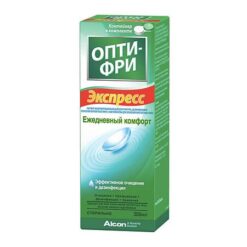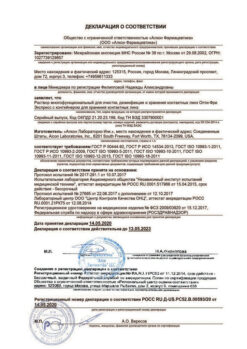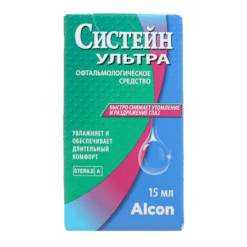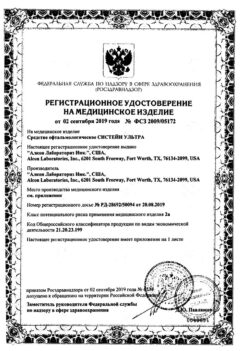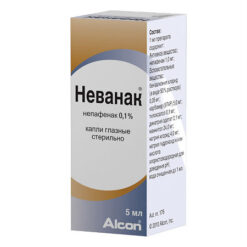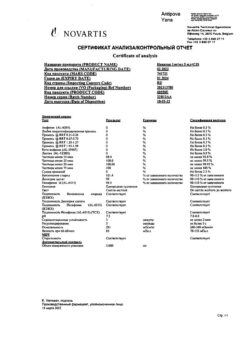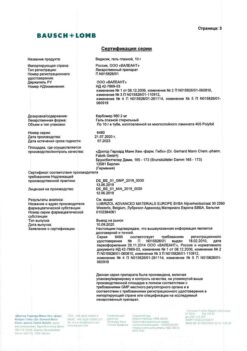No products in the cart.
Visallergol, eye drops 0.2% 2.5ml
€16.88 €14.06
Description
Pharmacokinetics
Absorption
Olopatadine undergoes systemic absorption similar to other topical medications. However, plasma concentrations of olopatadine after its topical application in ophthalmology are low and range from below quantification (< 0.5 ng/mL) to 1.3 ng/mL. Reported plasma concentrations are 50-200 times lower than those of oral administration of therapeutic doses of olopatadine.
Pharmacodynamics
Olopatadine is a powerful selective anti-allergic/antihistamine drug whose pharmacological effects are developed through several different mechanisms of action. It is an antagonist of histamine (the main mediator of allergic reactions in humans) and prevents histamine-induced release of inflammatory cytokines in conjunctival epithelial cells. In vitro studies suggest inhibition of release of anti-inflammatory mediators by conjunctival mast cells.
In patients with patent nasolacrimal ducts local application of olopatadine in the form of instillations into the conjunctival sac reduced the severity of nasal symptoms often accompanying seasonal allergic conjunctivitis. Olopatadine has no clinically significant effect on pupil diameter.
Indications
Indications
Relief of eye itching in allergic conjunctivitis.
Pharmacological effect
Pharmacological effect
Pharmacokinetics
Suction
Olopatadine undergoes systemic absorption, like other drugs intended for topical use. However, plasma concentrations of olopatadine following topical ophthalmic administration are low, ranging from subquantitable levels (<0.5 ng/mL) to 1.3 ng/mL. Reported plasma concentrations are 50-200 times lower than those obtained with oral therapeutic doses of olopatadine.
Removal
According to pharmacokinetic studies of oral forms of olopatadine, the half-life is from 8 to 12 hours, the drug is eliminated primarily by the kidneys. 60 – 70% of the administered dose is excreted unchanged in the urine; low concentrations of 2 metabolites – mono-desmethyl and n-oxide – are also determined in the urine. Due to the fact that olopatadine is excreted by the kidneys predominantly unchanged, renal impairment leads to changes in the pharmacokinetics of olopatadine, leading to a significant (2.3-fold) increase in the plasma concentration of olopatadine in patients with severe renal failure (creatinine clearance 13 ml/min). The concentration of olopatadine in plasma after its topical administration in the form of instillations is 50-200 times lower than with oral administration of therapeutic doses, therefore, no change in dosage regimen is required in patients with impaired renal function. Since the hepatic elimination route is not the main route for olopatadine, no dose adjustment is required when used in patients with impaired liver function. Following oral administration of 10 mg olopatadine to hemodialysis patients, olopatadine plasma concentrations were significantly lower on hemodialysis days compared with non-hemodialysis days. This indicates that removal of olopatadine by hemodialysis is possible.
According to the results of comparative studies of the pharmacokinetics of the oral dosage form of olopatadine at a concentration of 10 mg in young (average age – 21 years) and elderly patients (average age 74 years), there were no significant differences in plasma concentrations of olopatadine, plasma protein binding and parameters of drug excretion in unchanged form and in the form of metabolites.
Pharmacodynamics
Olopatadine is a potent selective antiallergic/antihistamine drug whose pharmacological effects occur through several different mechanisms of action. It is an antagonist of histamine (the main mediator of allergic reactions in humans) and prevents the histamine-induced release of inflammatory cytokines in conjunctival epithelial cells. In vitro studies suggest inhibition of the release of anti-inflammatory mediators by conjunctival mast cells.
In patients with patent nasolacrimal ducts, local use of olopatadine in the form of instillations into the conjunctival sac reduced the severity of nasal symptoms that often accompany seasonal allergic conjunctivitis. Olopatadine does not have a clinically significant effect on pupil diameter.
Special instructions
Special instructions
Olopatadine hydrochloride is an antiallergic/antihistamine drug for topical use in ophthalmology, and, despite topical application, can be absorbed into the systemic circulation. If severe hypersensitivity reactions occur, you should stop using the drug.
Visallergol® should not be used to relieve conjunctival injection caused by contact lens use.
The drug contains benzalkonium chloride, which can be adsorbed by soft contact lenses and cause eye irritation. It is necessary to remove contact lenses before instillation and reinstall them no earlier than 15 minutes after instillation of the drug.
According to a number of studies, benzalkonium chloride can provoke the development of punctate keratopathy and/or toxic ulcerative keratopathy.
Careful monitoring of the eye condition of patients is required with frequent or long-term use of Visallergol® with concomitant dry eye syndrome, as well as with damage to the cornea.
Impact on the ability to drive vehicles and machinery
Visallergol® does not have a significant effect on the ability to drive vehicles or operate machinery. If blurred vision is noted immediately after instillation, it is necessary to refrain from driving vehicles and machinery until clarity of visual perception is restored.
Active ingredient
Active ingredient
Olopatadine
Composition
Composition
1 ml contains:
active substance – olopatadine hydrochloride 2.22 mg (equivalent to olopatadine 2 mg),
excipients:
benzalkonium chloride – 0.1 mg,
povidone K-29/32 – 18 mg,
sodium hydrogen phosphate anhydrous – 5.0 mg,
sodium chloride – 5.5 mg,
disodium edetate – 0.1 mg,
hydrochloric acid and/or sodium hydroxide to pH 7.0,
water for injections up to 1 ml.
Contraindications
Contraindications
Hypersensitivity to the components of the drug.
Children under 2 years of age.
Pregnancy and breastfeeding period.
Side Effects
Side Effects
General information about the adverse event profile.
In clinical studies involving 1680 patients, the dosage regimen ranged from 1 to 4 drops per day, the duration of the course of therapy was up to 4 months, the use of olopatadine was carried out both in monotherapy and in combination with loratadine at a dosage of 10 mg. The overall incidence of adverse events was about 4.5%, while discontinuation of participation in the clinical trial due to the development of adverse reactions was noted in only 1.6% of cases. During clinical studies, no serious adverse events were noted, either from the organ of vision or from the body as a whole. The most common treatment-related adverse reaction was eye pain, occurring in 0.7% of patients.
Tabular data on adverse events.
The following adverse events were observed during clinical trials and post-registration use of the drug and are classified according to the following gradation of the frequency of occurrence of adverse events: very common (>1/10), common (from >1/100 to 1/1,000 to 1/10,000 to <1/1000), very rare (<1/10,000), frequency unknown (frequency cannot be determined based on available data). Within each group, adverse events are listed in order of decreasing severity
System-organ class
Frequency of occurrence
Adverse events
Infectious disorders
Uncommon
Rhinitis
Immune system disorders
Frequency unknown
Hypersensitivity, facial swelling
Nervous system disorders
Often
Uncommon
Frequency unknown
Headache, dysgeusia
Dizziness, hypoesthesia
Drowsiness
Visual disorders
Often
Uncommon
Frequency unknown
Eye pain, eye irritation, dry eye syndrome, unusual sensations in the eye.
Corneal erosion, corneal epithelial defect, punctate keratitis, keratitis, accumulation of pigment in the area of the corneal defect during diagnostic tests, eye discharge, photophobia, blurred vision, decreased visual acuity, blepharospasm, eye discomfort, eye itching, conjunctival folliculosis, conjunctival disorders, feeling foreign body in the eye, lacrimation, erythema of the eyelids, swelling of the eyelids, eyelid disorders,
conjunctival injection.
Corneal edema, conjunctival edema, conjunctivitis, mydriasis, visual impairment, crusts on the edges of the eyelids.
Respiratory, thoracic and mediastinal disorders
Often
Frequency unknown
Dry nose
Dyspnea, sinusitis
Gastrointestinal disorders
Frequency unknown
Nausea, vomiting
Skin and subcutaneous tissue disorders
Uncommon
Frequency unknown
Contact dermatitis, burning sensation of the skin, dry skin.
Dermatitis, erythema.
General violations
Often
Frequency unknown
Increased fatigue
Asthenia, feeling of malaise
In very rare cases, corneal calcification has developed when phosphate drops were used in patients with concomitant significant corneal damage.
Interaction
Interaction
Interaction studies of olopatadine with other drugs have not been conducted.
In vitro studies demonstrated the absence of inhibition of metabolic reactions mediated by cytochrome P-450 isoenzymes 1A2, 2C8, 2C9, 2C19, 2D6, 2E1 and 3A4.
According to the results obtained, the likelihood of olopatadine entering into metabolic reactions when used together with other drugs is assessed as low.
Overdose
Overdose
There is no information on the development of toxic effects due to accidental administration of an excess amount of the drug into the conjunctival cavity or accidental ingestion.
In case of overdose due to accidental ingestion, treatment is symptomatic.
Prescribing
Prescribing
antiallergic agent – H1-histamine receptor blocker.
Storage conditions
Storage conditions
Store at temperatures between 2°C and 25°C.
Do not freeze.
Keep out of the reach of children!
Shelf life
Shelf life
2 years.
The period of use after opening the bottle is 28 days.
Do not use after the expiration date stated on the package.
Manufacturer
Manufacturer
Sentiss Pharma Pvt.Ltd, India
Additional information
| Shelf life | 2 years. Period of use after opening the bottle 28 days. Do not use after the expiration date shown on the package. |
|---|---|
| Conditions of storage | Store at temperatures from 2 ° C to 25 ° C. Do not freeze. Keep out of reach of children! |
| Manufacturer | Sentiss Pharma Pvt.Ltd, India |
| Medication form | eye drops |
| Brand | Sentiss Pharma Pvt.Ltd |
Related products
Buy Visallergol, eye drops 0.2% 2.5ml with delivery to USA, UK, Europe and over 120 other countries.

